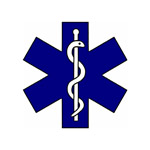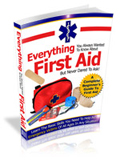Welcome to First Aid Guide
Standard First Aid Certificate Toronto Article
 To bookmark this article for further reading, click here.
To bookmark this article for further reading, click here.
Building A Wilderness First Aid Pouch
Heading out into the wilderness is a risky adventure, but when you have an adequate first aid pouch, you will be prepared for even the smallest of accidents.
When you're far away from others and you need to fend for yourself, having a good first aid pouch will allow you to manage an injury until help arrives or until you can get out of the woods. Here's what you need to include in your first aid kit.
It All Starts With The Pouch
Since you will be out in the wilderness, you need to find a first aid pouch that can withstand the elements. A water-proof box is best, but if you can find a water-proof bag that seals up, that will work well too.This way, you can store bandages without fear of them getting wet or contaminated. It will also help if your first aid kit is lightweight so that it's easy to carry as you are hiking or walking.
At the same time, your pouch should be easy to access, so an across the body design or hip design might be a better choice.
What You Need to Add
Within your first aid pouch should be the essentials found in any first aid kit – bandages and antiseptic. These will help you manage smaller cuts and scrapes, while also helping you protect these injuries from infection.Since you will be out in the wilderness and you might need to hike a long ways for help, it's suggested that you pack heavier Ace bandages and even duct tape to help secure wounds, if they should be deeper or bleeding heavily. Include a lot of gauze padding as well to pack a deeper wound.
The first aid pouch should also include some sort of piece of fabric for snakebite management. If you should get bitten, it would usually be on the leg. To help prevent the spread of the toxins, you will want to cut off the circulation to that area by tying this twine or string around your leg.
This is not a cure, however, and you will want to make sure to get help if you suspect a snake bite.
Though it doesn't seem to be useful for injuries, your first aid pouch should also include some sort of signaling device, like a flare or flashlight. This will help you signal for help if you should need it.
You might also want to include a large red banner or sign that says 'Help' that can be displayed when needed.


